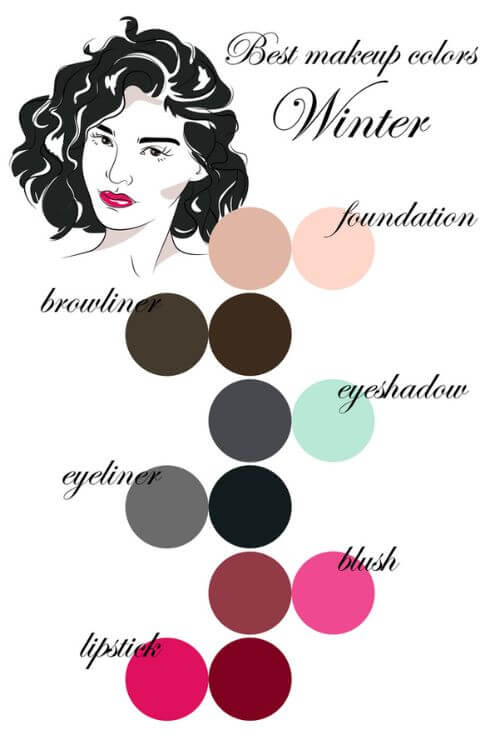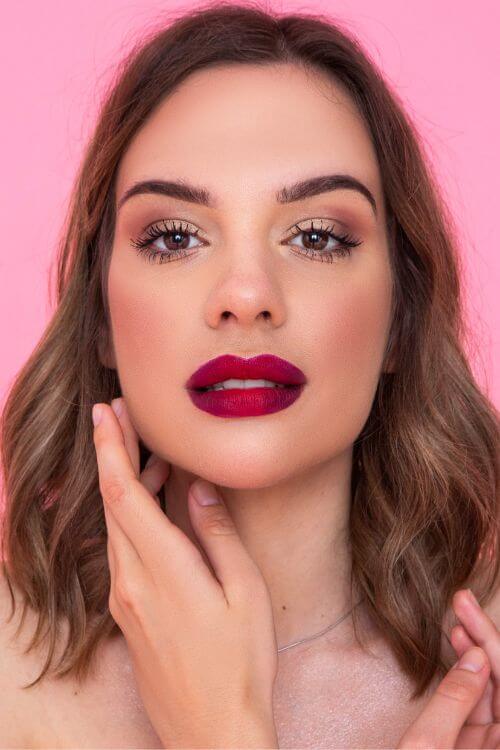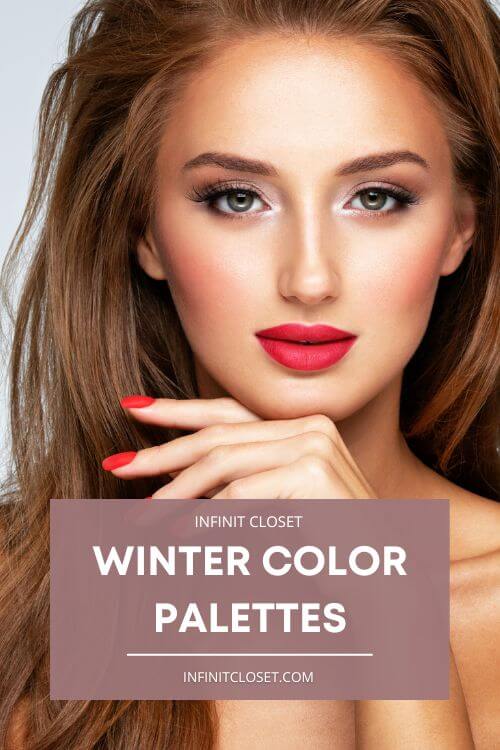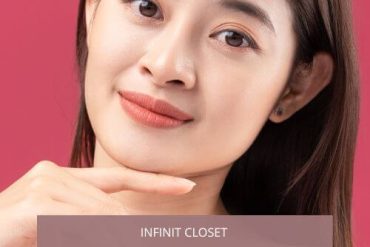Seasonal color analysis is a method developed to find the colors that synergize with our skin, hair, and eyes. Wearing contrasting colors can make your skin brighter and enhance your look. Winter colors are usually vivid, in high contrast, cool, and clear. If you are looking for winter colors that contrast your skin tone, you need to understand winter color palettes.
Intense and icy colors depict winter. While looking into winter images or videos, you may observe the blue, black, and white contrasts. Vivid colors such as icy blue, cherry, fuchsia, and bottle green are standard for winter styling. This article covers all winter color palettes and their characteristics so you can style yourself confidently.
Winter Physical Characteristics
The following are characteristics held by winter-toned individuals.
Hair
A person with winter tones has intensely colored hair ranging from mid to dark brown or black. However, an intense gray also falls into the category of winter coloring.
Eyes
The eyes of a winter person are most intensely colored and clear. These colors include blue, gray/blue, gray/green, brown hazel, brown, and black. Moreover, the eyebrows are in strong contrast with the skin.
Skin
A winter person’s skin is fair, with a pink or beige tinge. However, it can also be olive or dark brown, as long as they have a blue undertone.
Winter Color Palettes

The winter palette has four main seasonal categories, including Bright, True, Cool, and Dark Winter. All these categories have specific colors that harmonize with your look. The following are the types of winter color palettes:
- Bright Winter Palette
- True Winter Palette
- Cool Winter Palette
- Dark Winter Palette
A Bright Winter palette is a highly saturated spectrum of colors. On the other hand, a True Winter palette has colder colors than the Bright Winter palettes and stays between Bright and Dark Winter palettes. Cool Winter palettes have hues reflecting snowy, cooler days and nights. However, it remains between True Winter and Dark Winter palettes. Although all of these palettes make winter colors, not everyone has the characteristics of all four families.
Bright Winter Palette
This winter palette has brighter and more precise colors with higher contrast. It has some extra brightness in its colors taken from spring palettes. However, it is much cooler and can even be brisk compared to spring.
Moreover, this color palette is not typical in the natural world. The contrast between hair, skin, and eyes is higher, making the features saturated and bright without muddiness. The appearance is crisp and clear with a silverish shimmer.
The color palette of bright winter includes cerise, hot pink, neon pink, true red, Chinese blue, cobalt blue, periwinkle, star blue, navy, acid yellow, electric lime, mint ice, iced aqua, silver, white, silver moon, and dove gray.
True Winter Palette
True Winter has the most visualized colors in the winter palette. It contains all the extremes of bright, light, and dark, including the boldest scarlet, bright white, and true black. The hair, skin, and eyes are in high contrast with each other. True Winter palette comprises dark hair, fair skin, and blue or green eyes. The high contrast colors in the true winter palette are ice blue, cobalt blue, sapphire, navy blue, lobelia, light emerald, emerald, dark emerald, neon pink, hot pink, fuchsia, cochineal, true red, white, black, silver, and charcoal.
The appearance of a True Winter person is frosty coolness with no warmth in any of the features. Moreover, a blue undertone dominates the skin, hair, and eyes. True Winter is cold and bright when compared to summer palettes.
Cool Winter Palette
This cool or sultry palette has the deepest ends of the winter palette. It has low brightness when compared to Bright and True Winter palettes. However, it gains some darkness, and the skin is exceptionally cool-toned.
The best colors in this category are charcoal gray, deep indigo, deep navy, deep burgundy, and ashen gray, which is more neutral than white. Moreover, it also includes silver moon, ice blue, iced lavender, tango red, carmine red, raspberry, rumba red, Beaujolais, dark amethyst, merlot, cassis, blackberry, navy, pine, mole, charcoal, indigo, and black.
Dark Winter Palette
The Dark Winter palette is the darkest palette of the winter palettes, depicting the absolute cold. It is also famous as a burnished or deep winter palette. It carries hints of warmth, such as tinges of light red in the hair or amber in the eyes. These colors are usually close to the autumn end of the palette, but they are colder than the warm yellowish tone of autumn colors.
The best colors in the Dark Winter palette are stone, mole gray, and pine green. Moreover, it also includes cherry, tango red, sultry red, rumba red, Beaujolais, blackberry, pansy, navy, rich navy, deep lagoon, pine, electric lime, light gray, silver moon, pebble gray, zinc marl, charcoal, and mole.

What Colors Should You Avoid in Winter?
The colors that do not contribute to the winter palettes should be avoided because they do not contrast with winter skin that typically has a faintly blue undertone. These colors include dusty blues, yellows, oranges, and pastel pinks. However, the more icy shades of pink and blue are go-to winter shades.
Furthermore, clear gray and cyan are also in contrast to winter palettes and their styling. However, you can combine lighter neutrals with brighter accents. For example, bright pink can contrast with light gray.
Conclusion
Winter has the most vivid colors of all seasons. The skin highly contrasts with one’s cool-toned eyes and dark-colored hair. The winter palette is divided into four categories which include True, Cool, Bright, and Dark Winter.
These palettes have different colors with high contrast and chroma. If you’re a winter person but unsure which palette works for you, choose an outfit with colors from each and go with the color scheme that best fits.


